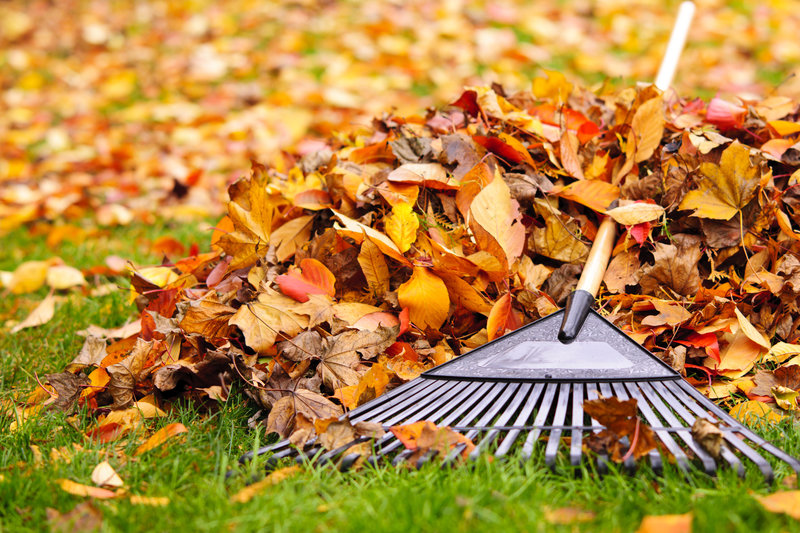CA Contractors #344056

Fall is a magical time of year. The leaves start changing and the temperature starts dropping. But these changes also bring some needed maintenance.
After fall is winter and unfortunately, that means you'll have to take out your pretty spring flowers and do some cleaning up. Fall lawn maintenance helps prepare your lawn for winter. So it's time to trim the bushes and tidy up the backyard.
With so much to do, it's easy to not know where to start. Start the fall season off right. Here are 7 fall landscaping tips to get you started.
Before you start taking out the fall and Halloween yard decorations, essential lawn care is necessary. This helps prepare your grass and soil for the winter cold. When the weather warms up again, your ground will be healthy.
First, remove the weeds. This will ensure your grass retains all of the water. Test the soil. Your soil should remain at a healthy pH level. Too much acidity or alkaline will affect the soil during the winter.
Last but not least: rake those leaves. Some leaves are okay. But if you have piles of leaves, the snow can stick to the leaves which is even more difficult to remove.
To speed up the process, use your lawn mower (with the grass cutter attached) instead of the traditional raking method.
Did you know your grass undergoes an overseeding process right before fall begins? With the right technique, you can naturally achieve perfect grass for spring.
Start applying fertilizer on your grass. Your lawn is most active during this time. It will need all of the nutrients it can get. Fertilizer also helps the roots recover from the summer heat. This also prepares your grass to grow more.
You should also apply fertilizer in late fall, right before winter begins.
Make sure the fertilizer has a low NPK number, such as 32-0-10. This helps winterize the grass, giving your grass the necessary amount of nutrients so you have healthy grass in the spring.
If you have a green thumb, you probably love the spring and summer to achieve a lush garden and healthy vegetables.
Unfortunately, you have to put those planting pots away during the fall. This is the time to prepare your garden for winterization.
Start by removing any old plant matter. If you don't, this invites a myriad of diseases that can affect your plants in the spring.
Should you use the rototiller? This is a common debate amongst gardeners. The safest approach is to only do the bare minimum rototilling. This will help ease the spring gardening process next year.
Trees and shrubs with fragile limbs will fall to their death during intense snowstorms. Start by removing any unnecessary branches and dead or weak shrubs.
Some trees take extra care, such as evergreens. Any trees that do not do well in the winter should be protected. How do you do this? Simple: water them. This will help the trees retain moisture so they don't dry out in the cold weather.
But watering should occur in the late fall after the leaves have fallen. This ensures the water doesn't harden on excess dead leaves.
Cover the entire tree in water. This includes the roots and the canopy.
The actual plants aren't the only gardening materials that need winterization.
Your tools should also prepare for the winter. Protecting your tools from the winter cold will ensure they're strong enough for next spring.
Start by properly storing your tools. Bring the garden hose inside. Turn off any water sources in the late fall to prevent bursting pipes. Bring in the lawn mower and rototiller. Make sure you drain the lawn mower of any excess oil.
Take out the snow blower. Prepare the snow blower by changing the oil, installing a new spark plug, inspect the belts, apply lube, and fill it with fresh gasoline.
You worked hard all year to save your compost bin. Don't let winter kill off your hard work! Always keep your compost bin covered. Plenty of bins come with a cover for this reason.
If your bin doesn't have a cover, use a tarp. A layer of leaves insulates the compost even further.
Place the bin in an area that will receive sunlight. Leaving them outside is your best bet. But keep them close to your home.
Next to your backdoor is your best option so they receive sunlight, are close in proximity, and won't affect your curb appeal.
Add compost activators, such as cottonseed or coffee grounds.
Even though the temperature will start dropping, fall landscaping and planting is still important. Why?
This will help your plants grow for spring. Surprisingly, some plants grow better in cold weather.
Plants need sunlight, but spring and summer's hot air can dry out your plants when they're fresh and vulnerable. This time of year offers enough sunlight but plenty of cool air.
And with the extra fertilization and moisture, you'll have healthy new plants for the spring.
October is the best month for planting. The middle of October yields the cool air but warm soil. This will help new plants thrive.
Rather than flowers, stick to trees and shrubs. These plants do best in the cool months.
When the fall months begin, you need to get a fall landscaping plan. This will winterize your garden to have a healthy yard by the time spring hits.
Start with fertilization, removing and adding necessary plants, and preparing your tools for winter. Some tasks, such as fertilizing and planting shrubs, are better in the fall than the spring.
After you do these tasks, you can take out the fall and Halloween decorations.
Do you need help with your lawn winterization? If you're in the Bay Area, give us a call.